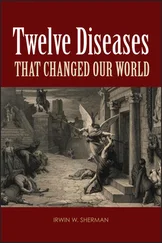Francis Anstie - Neuralgia and the Diseases that Resemble it
Здесь есть возможность читать онлайн «Francis Anstie - Neuralgia and the Diseases that Resemble it» — ознакомительный отрывок электронной книги совершенно бесплатно, а после прочтения отрывка купить полную версию. В некоторых случаях можно слушать аудио, скачать через торрент в формате fb2 и присутствует краткое содержание. Жанр: foreign_antique, foreign_prose, на английском языке. Описание произведения, (предисловие) а так же отзывы посетителей доступны на портале библиотеки ЛибКат.
- Название:Neuralgia and the Diseases that Resemble it
- Автор:
- Жанр:
- Год:неизвестен
- ISBN:нет данных
- Рейтинг книги:5 / 5. Голосов: 1
-
Избранное:Добавить в избранное
- Отзывы:
-
Ваша оценка:
- 100
- 1
- 2
- 3
- 4
- 5
Neuralgia and the Diseases that Resemble it: краткое содержание, описание и аннотация
Предлагаем к чтению аннотацию, описание, краткое содержание или предисловие (зависит от того, что написал сам автор книги «Neuralgia and the Diseases that Resemble it»). Если вы не нашли необходимую информацию о книге — напишите в комментариях, мы постараемся отыскать её.
Neuralgia and the Diseases that Resemble it — читать онлайн ознакомительный отрывок
Ниже представлен текст книги, разбитый по страницам. Система сохранения места последней прочитанной страницы, позволяет с удобством читать онлайн бесплатно книгу «Neuralgia and the Diseases that Resemble it», без необходимости каждый раз заново искать на чём Вы остановились. Поставьте закладку, и сможете в любой момент перейти на страницу, на которой закончили чтение.
Интервал:
Закладка:
If pain be not a heightening of ordinary sensation, then we seem to be shut up to the idea that it is a perversion owing to a molecular change of some part of the machinery of sensation which frustrates function. For it is to be observed that, while the sensations conveyed by the healthy nerve are correct in the indications which they afford to the percipient brain, the indications given by pain are vague and untrustworthy, and often seriously misleading. Not to speak of the nerves of special sense, or of the fibres which convey the sensations of muscular movement, even the nerves of common sensation do carry to the internal perception, in health, a distinct impression of the well-being of the organs to which they are distributed. Mr. Bain 2 2 "Senses and Intellect."
has well pointed out the positive character of this feeling, which is so often incorrectly referred to as if it were a mere negation of feeling. It is a sensation of equable and diffused comfort, if I may be allowed to use the expression, which streams in from all parts of the organism; and there is no possibility of comparing it, in any scale of less or more, with the sensation of pain; for the latter commonly conveys no correct information as to the organ from which it proceeds, or appears to proceed. Especially is this the case in the neuralgias, for more commonly than not the apparent seat of the pain is widely removed from the actual seat of the mischief which causes it.
If we inquire a little further into the circumstances under which various kinds of pain occur, we gain some fresh suggestions. Among the neuralgias, those are the most acutely agonizing which occur under circumstances of impaired nutrition incident to the period of bodily decay, and strong reasons will be hereafter adduced for the belief that there is especial impairment of the nutrition of the central end of the painful nerves. To find a parallel to the severity of this kind of pains we must turn to the case of organic tumors, which, from their position, structure, and mode of growth, necessarily exercise continuous and severe pressure on the branches or the trunk of a nerve; or to the class of pains which attend severe cramp, or tonic contraction of muscles. Now, it can scarcely be doubted that in the latter instance there is an abnormally rapid and violent destruction of tissue going on; at the very least there is an extraordinarily violent and irregular manifestation of motor force. In any case the patent fact here is dynamic perturbation of a severe kind; and, in the instance of organic tumors exercising steady and continuously increasing pressure on nerves, one can scarcely doubt that a similar perturbation, less intense but more enduring, is necessarily set up. That which can be done in the way of producing severe pain by these severe affections of the peripheral portions of nerves, or of tissues lying outside them, we might a priori expect would be effected by slighter but continuous changes in the nutrition of the more important portion of the nerve itself – its central gray nucleus. One would say that a pathological process which continuously and progressively lowered the standard of nutrition here must interfere from hour to hour, certainly from day to day, with that regular and equable distribution of force which is the essence of unimpeded function.
Take, again, the case of the very severe pain which frequently attends inflammation of the pleura and of the peritoneum. Whatever theory of the causation of these pains we may adopt, it is certain that one most important element in their production and maintenance is the continual movement and friction of the affected parts. But there is little doubt that the moving muscles are involved in the inflammatory process, as Dr. Inman has correctly observed. It would seem plain that under these circumstances – an inflamed muscular structure forced to perform its ordinary contractions as well as it can – there must be powerful dynamic perturbation going on.
If perturbation of nerve-function – a disturbance quite different from mere exaltation of the normal development of nerve-force – be the essence of pain, how comes it that pains of the severest type may be produced by changes in structures which are usually described, for practical purposes, as lying outside the nervous system? We must, in the first place, remark that the externality of any bodily tissue to the nervous system is more apparent than real. Microscopic researches are constantly revealing nerve-fibres, in ever-increasing profusion, which penetrate to parts seemingly the least vitalized in the organism. But, in any case, the nerves are certainly the ultimate channel of communication between the suffering part and the sentient centre. It seems, therefore, the inevitable conclusion that a dynamic perturbation going on in the non-nervous tissue is continued along the nerves themselves: and that the severity of the pain perceived by the conscious centres is proportionate to the tumultuousness, the want of coordination, and the waste with which force is being evolved in the cramped muscle, or whatever structure it may be, in which the pain takes its source.
Not to pursue these topics further, we may sum up the considerations which have now been adduced, in the following general propositions, which will tend to simplify the examination of the various painful disorders which we are about to discuss:
1. Pain is not a true hyperæsthesia; on the contrary, it involves a lowering of true function.
2. Pain is due to a perturbation of nerve-force, originating in dynamic disturbance either within or without the nervous system.
3. The susceptibility to this perturbation is great in proportion to the physical imperfection of the nervous tissue, until this imperfection reaches to the extent of cutting off nervous communications (paralysis).
PART I.
ON NEURALGIA
CHAPTER I.
CLINICAL HISTORY
Neuralgia may be defined as a disease of the nervous system, manifesting itself by pains which, in the great majority of cases, are unilateral, and which appear to follow accurately the course of particular nerves, and ramify, sometimes into a few, sometimes into all, the terminal branches of those nerves. These pains are usually sudden in their onset, and of a darting, stabbing, boring, or burning character; they are at first unattended with any local change, or any general febrile excitement. They are always markedly intermittent, at any rate at first; the intermissions are sometimes regular, and sometimes irregular; the attacks commonly go on increasing in severity on each successive occasion. The intermissions are distinguished by complete, or almost complete, freedom from suffering, and in recent cases the patient appears to be quite well at these times; except that, for some short time after the attack, the parts through which the painful nerves ramify remain sore, and tender to the touch. In old-standing cases, however, persistent tenderness, and other signs of local mischief, are apt to be developed in the tissues around the peripheral twigs. Severe neuralgias are usually complicated with secondary affections of other nerves which are intimately connected with those that are the original seat of pain; and in this way congestions of blood vessels, hypersecretion or arrested secretion from glands, inflammation and ulceration of tissues, etc., are sometimes brought about.
The above is a general description of neuralgia which will identify the disease sufficiently for the purpose of introducing it the attention of the reader. We must now proceed to give a more accurate account of its
Clinical History and Symptoms. – These vary so greatly in different kinds of neuralgia that it will be necessary to discuss the greater part of this subject under the headings of the special varieties of the disease. There are certain common features, however, in all true neuralgias.
Читать дальшеИнтервал:
Закладка:
Похожие книги на «Neuralgia and the Diseases that Resemble it»
Представляем Вашему вниманию похожие книги на «Neuralgia and the Diseases that Resemble it» списком для выбора. Мы отобрали схожую по названию и смыслу литературу в надежде предоставить читателям больше вариантов отыскать новые, интересные, ещё непрочитанные произведения.
Обсуждение, отзывы о книге «Neuralgia and the Diseases that Resemble it» и просто собственные мнения читателей. Оставьте ваши комментарии, напишите, что Вы думаете о произведении, его смысле или главных героях. Укажите что конкретно понравилось, а что нет, и почему Вы так считаете.












